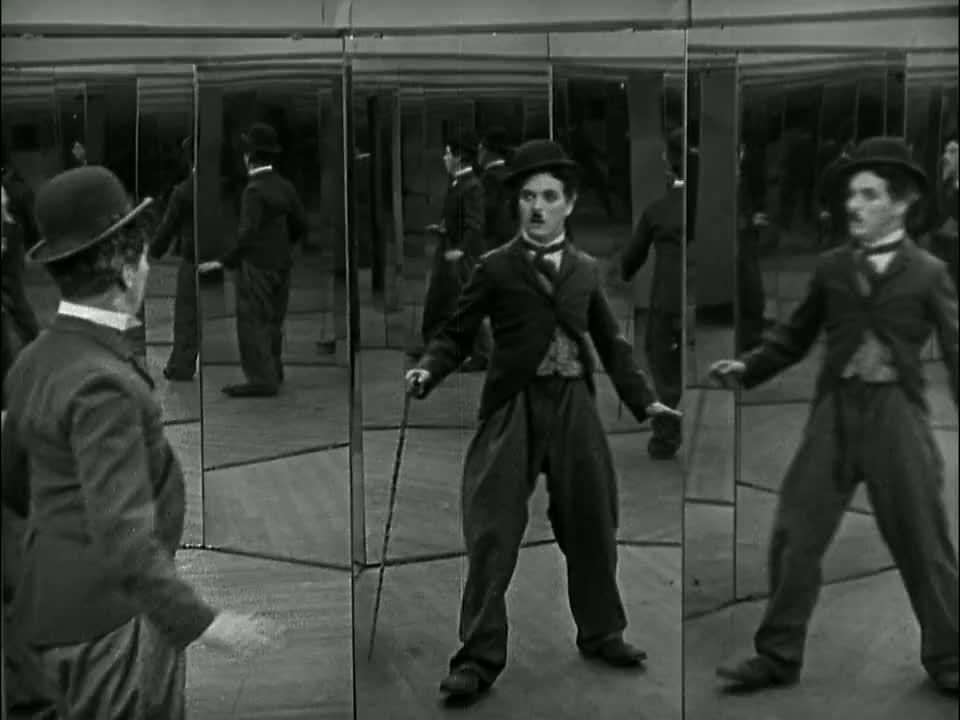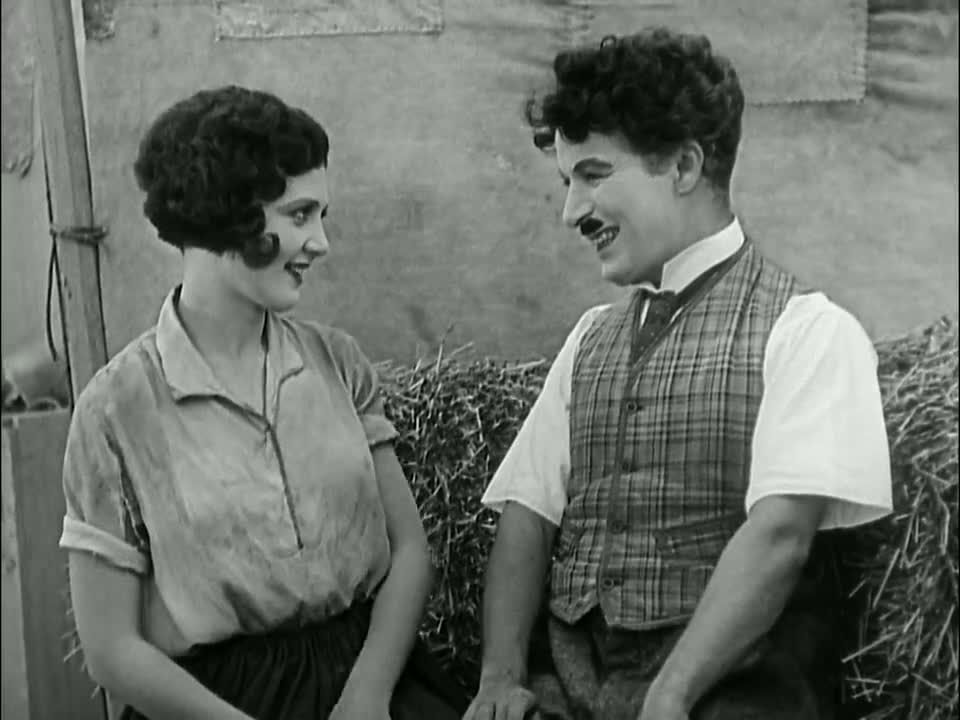
Charles Chaplin's fourth feature, The Circus is also one of his funniest and liveliest, a dazzling comic showcase for the tramp's antics at their best. Like Chaplin's previous film, The Gold Rush, this delivers one fast-paced, irresistibly funny gag after another, with barely a pause for breath. It's also one of Chaplin's most focused features, set almost entirely in a single location, generating its jokes — and its subtle but genuine pathos — from the tramp's interactions with a small circus troupe.
Chaplin arrives at the circus through one of the greatest set pieces in his oeuvre, a manic chase in which he's mistaken for a pickpocket and pursued by both a cop and the actual pickpocket, who wants to get back the wallet he planted on the tramp. This chase leads into a hall of mirrors and pretty much just stays there because Chaplin has so much fun playing with the prism-like reflections and multiple tramps running around the screen in different directions. It's brilliant, and brilliantly minimal, because Chaplin has managed to capture the feel of a chase sequence while mostly remaining in one very small confined space, conveying the impression of a complex labyrinth through the refracted doubles of himself packed within the frame. He's interacting with himself, bumping into his doubles and politely doffing his cap, and in one hilarious bit of pantomime, he drops his bowler hat and keeps trying to retrieve one of its reflections before finally hooking the real thing with his cane. When he throws in other characters to further complicate this fragmented composition, it just becomes even more delightfully mad.
He finally escapes the funhouse and races into the circus, where he becomes an accidental hit with the crowds by running around the ring, fleeing a donkey that hates him on sight and getting mixed up in a magician's disappearing act. There's a lot of spatial fun here, as Chaplin and the magician's assistant continually switch places under a sheet and in a large box, running back and forth through trap doors to take each other's place on one side of the stage or the other.

There is also a strong element of melancholy running through the film, as the tramp falls in love with the circus ringmaster's (Al Ernest Garcia) mistreated stepdaughter (Merna Kennedy). The tramp witnesses the ringmaster's brutality towards the girl, beating her and denying her dinner when she doesn't master the tricks for her acrobatic performance. Chaplin, sweet and empathetic as always, slips the girl some food — hilariously, in one scene, by throwing it up to her as she sits in the rings above the big top — and cares for her. But as is often the case with the romance in Chaplin's films, the tramp is not destined to get the girl; he's too much of an outsider, an eccentric comic figure rather than a romantic hero, and soon enough the girl's fallen in love, not with the tramp, but with a dashing tightrope walker (Harry Crocker).
Thus there's a touching, heart-rending sadness to the final act of the film, even as Chaplin's antics become more and more frenzied when he stands in for the tightrope walker during a high-wire performance. The film closes with the tramp gracefully stepping aside, foregoing his own romantic ambitions to take on more of a fatherly role, the kindly and compassionate father that the girl hasn't had. There's a beautiful, aching quality to the final images, as the tramp brings the couple together and restores them to their place in the circus before stepping aside. The circus pulls away without him, the caravans leaving one by one until the tramp is left behind in an empty field. It's a sublime image of loneliness and isolation, with the tramp choosing not to stay with the circus, not to remain in the company of others but to head off on his own again. The final image, an iconic shot of the tramp heading off alone towards the horizon as the black irises in around him, is both tragic and jaunty, because the tramp's independence, his selflessness and goodness, are also what keep him lonely and isolated, left behind in the dust as the circus leaves town.
God, I absolutely adore this film, and have tenaciously defended it to a vocal minority who don't count it as "upper tier" Chaplin. What exactly comprised "upper tier" Chaplin?
ReplyDeleteWell, leaving out the shorts, which would complicate things here, I'd pose these four:
City Lights
The Gold Rush
Modern Times
The Circus
The next grouping, which are all arguably masterpieces or near-masterpieces, would be:
Monsieur Verdoux
Limelight
The Great Dictator
The Kid
A Woman of Paris
Anyway, putting ratings aside, I must once again commend you vigorouly for yet another superlative review of the Little Tramp's work, one that frames the artistry and worth in celebratory terms. My favorite sequences are 1.) the great set piece you describe of the chase in the hall of mirrors; the super gag, when Charlie makes believe he's a swinging mannequin, and of course the circus ring shenianigans when he is applauded for acting natural and booed when trying to be funny. The lion cage also provides for a classic chapter.
But yes, this is a deep melancholic spirit running through the film, that heightens the comedy and brings a deep humanist element that Chaplin is known for in his greatest films. Aching indeed.
I love the way this film moves at such a pace, so that if you blink you will probably miss another great gag - those early scenes where Chaplin rushes through the middle of the circus and ends up accidentally starring in one act after another are amazing. But, as you say, there is also the tone of melancholy running through, which so often seems to be there in films and indeed books centred on a circus - it seems that so many clowns are hiding their pain behind the greasepaint, and that is something which goes right back to stories like 'The Dying Clown' in 'Pickwick Papers'.
ReplyDeleteAs well as the great set-piece scenes I also love the way the relationship between Charlie and Merna Kennedy is built and the scenes you mention where he tries to feed her - the early scene where she pinches his piece of bread and he tries to teach her better table manners is another classic, sad and funny both at once. I've only recently been catching up on Chaplin's classics and have been struck by how many scenes there are involving food and terrible meals.. the shoe in the Gold Rush of course, but many more too.
My faves are City Lights, Monsieur Verdoux, The Great Dictator and Modern Times. But if you want to see what Chaplin was all about at his core The Circus is an ideal introduction.
ReplyDeleteWatched this for the first time a couple of weeks ago. Loved it, of course. The Tramp's accidental success at the circus reminded me, perversely perhaps, of Jerry Lewis's twist in The Errand Boy, when his schtick accidentally wins him favor with a movie producer who turns him into a star. Unfortunately, that movie has a thick crust of self-indulgent smarm in its philosophy of fame that The Circus is charmingly without. (And I'm a fan of Lewis's stuff.)
ReplyDelete